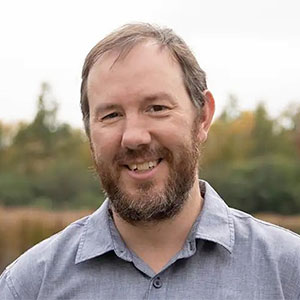Dr Adam Heathcote

IAS Open Programme
St. Croix Watershed Research Station of the Science Museum of Minnesota
I am looking forward to traveling to Loughborough University’s Institute for Advanced Studies this Spring and sharing share some of my research in the field of paleolimnology. My research focuses broadly on how we can use what is preserved in lake sediments to better understand the impacts of humans on aquatic ecosystems prior to and throughout the Anthropocene.
At the time I was beginning graduate school in the late 2000’s, diatoms were riding high as the kings of paleolimnology. These magnificently ornate, glass-walled algae had become the Swiss-army knife of paleolimnologists. This was in large part due to their success in definitively demonstrating the perils of acid rain on aquatic ecosystems and linking these impacts to industrial air pollution across time and space. Diatoms are a natural stand-in, or proxy, for a myriad of important environmental conditions of interest due to their degradation resistant cell wall (made of glass!), species-specific sensitivity to a variety of dissolved substances (pH, nutrients, salinity), and prolific productivity (~1 billion individuals in a teaspoon of mud). Much of my earliest research revolved around the use of diatoms from the bottoms of sediment cores to provide true pre-Anthropocene reference points for lakes which were imbedded into one of the most intensively agricultural regions of the world.
Although useful for answering questions about the history of a specific lake or catchment, more recently I’ve become interested in how we can synthesize sediment archives to learn about globally important issues. Given the wealth of data that has been collected from sediment cores in recent decades, it is an opportune time to consolidate these data into cohesive databases. By assembling these data, some of my recent projects have better constrained the role of inland waters on the carbon cycle, specifically their immense stores of carbon in sediments, and scaled these stores up to the global population of lakes.
One of the largest hurdles of any synthesis work is consolidating data with consistently reported methodologies, and sediment work is no different. We have developed best practices for this using radiometric chronologies and commonly used sediment chemistry measurements, but moving into biological proxies adds additional difficulty. Issues with consistent taxonomy, especially with diatoms, have long been known, however, new sedimentary techniques offer a potential solution. The advancement of next-generation DNA sequencing techniques and better methods for extracting and amplifying sedimentary ancient DNA provides a promising new avenue. This, combined with open repositories for sequencing data are exciting new avenues to explore for those of us who are interested in linking questions of historic environmental condition to previously difficult to reconstruct biological organisms (e.g., bacteria, archaea, and non-siliceous eukaryotic algae).
I look forward to sharing just a few small examples of my work, using both classical and emerging paleolimnological techniques, and hope you will share at least a small bit of my enthusiasm for what lake mud can teach us about our world.